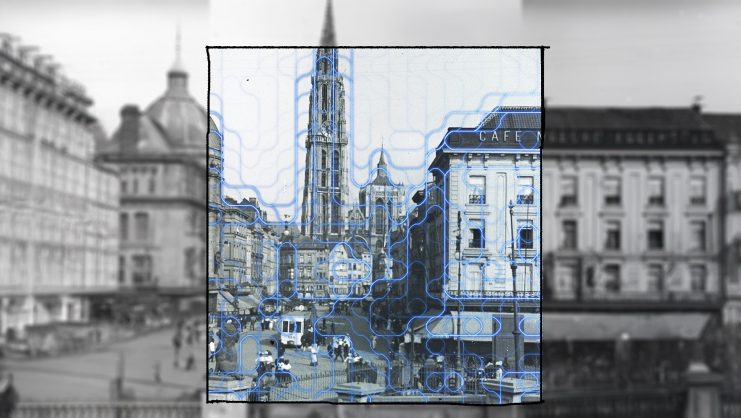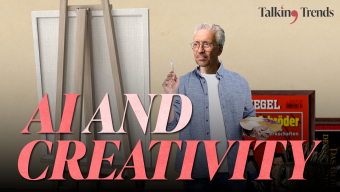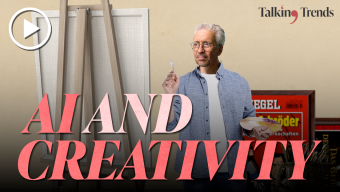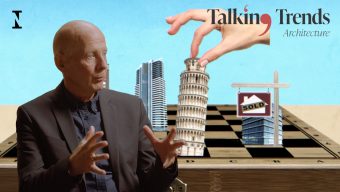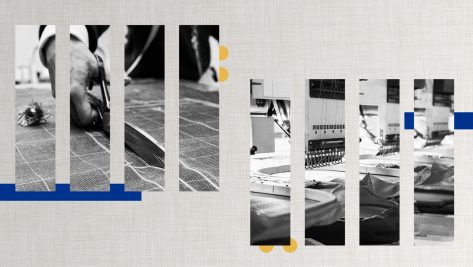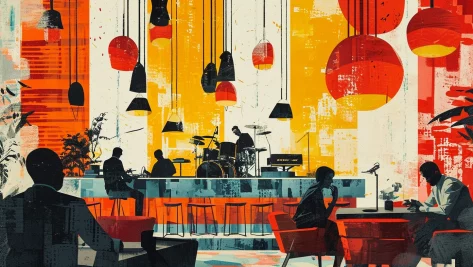Talking Trends: Architecture
What are the transformative trends and technologies in architecture today? In the first of our Talking Trends series, UNStudio founder Ben van Berkel sits down with David Goodman to delve into sustainability’s evolving role in architecture and the integration of AI in design processes.
© IE Insights.
Transcription
David Goodman: Ben, thanks for being here today. I wanted to begin with a question that’s very broad and then from there kind of get more specific. We hear almost constantly that architecture, design, and creative industries can contribute to a better world. How does architecture lead to a better world?
Ben van Berkel: Technology gives us now much better insights in how clean indoor environments and outdoor environments are. As you know, I have this interest in, of course, the outdoor environment, but I’m also interested in the way how you can use data measuring, etc. the way how you can improve the environment, allowing for the outdoors, but also for the indoors. And now I can come up with data and say, “listen this is a better air system or more acoustic series of materials or nontoxic materials.”
We have proven that we could reduce down sick leave. And this is where it counts, that something works. So to make this world better. I lately hear also that the clients and the investors are working together. They are fascinated in this idea of post-occupancy research because they want to know that after two or three years that this building is still as sustainable and as healthy as we promised them.
And this is what I really like, because this gives the opportunity to say, listen, you know, we can’t greenwash anymore because that’s what happened maybe the last 40, 50 years a lot. That we promised a lot of a green building or a better environment etc., but then over the years, the filters were not cleaned in the air system or the home maintenance.
Then after five years, the building is not anymore as healthy as you thought. So technology can help us a lot to direct and combine the different parameters of how to make a world better.
DG: And that’s interesting because what you’re suggesting is the building is constantly collecting data and that there’s an evaluation phase later. Does this mean perhaps that the role of the architect in this case or the designer generally is not only upfront, the architect prepares the project, the project is executed. And generally that’s the end of our relationship.
But when you talk about this kind of ongoing process of evaluation, adaptation, do you think that it may lead to a kind of questioning of where the ending point is, that relationship between the designer and the client?
BvB: Before it was so that the client would say, “Yeah, this is my brief,” and I could say, “Well, this is my design. And if you don’t like it, I’m out.” So, you know, there was a kind of a little bit of polarization happening between the client and the architect. That polarization is changing in one way or the other in a more positive direction, because clients at the moment don’t know how to make the most optimum, sustainable, healthy, and more circular buildings.
They know they have to follow the ESG rules. They know that they have to implement that in their own company. But what is now interesting is that the clients are coming with a specialist to the table, sustainable specialist, economical specialist. I have my own specialist and more as a team, you have to collaborate together on this most ideal, more sustainable, but also of course, within the budget organized project.
And that makes it in one way or the other fascinating to talk about technology, adaptation and how the time and building hopefully can then stay sustainable. And don’t forget that it’s changing because some of the investors and they have only an interest in the five-year lifespan because they sell the building again to another company or another investor. But the ones who are actually at the moment very serious about the topic is the long-time investors in the real estate world because they think, sustainability is going to be not only important for the next three years, but over the next 5 to 10, 20 years.
DG: So you talked about, let’s say, indoor air quality or things that are measurable at the level of the building, but you also talk about circularity, and this is a big topic for you. When we talk about circularity, of course there’s the individual object, which is important, but then there’s a system that goes beyond. What is the role of the individual designer in this system of circularity?
BvB: The designer can make the most sustainable, and in the same time circular building. But then you have to explain it. What can you do with the materials after 10 years when maybe you really like to adapt the building for instance and change some of the elements in the building? So some of the steel work can maybe taken out and maybe be sold in the material passport you can generate for this project.
Try where it’s possible to bring in a material passport so that all the materials are collected in this passport and that over time these materials get their own particular value as well so that they can be exchangeable and hopefully be sold again on the market. You know, we saw that the material passports were interesting, but now slowly on we do get also resource passports where and how we can find the resources of a used material to be implemented in buildings.
And that is for us new. That is only something coming up over the last 5 to 6 years that you can find materials that have been used and can be reused.
DG: And I think we can say today for a building to perform properly, it has to be, let’s say, environmentally responsible. Right? This is the one hand. This is on the one hand. What does it do? And the other is something harder to categorize, but it’s more spiritual, more something that creates a sensation or somehow resonates with something deep within us.
I think within the modern movement, early in the modern movement, we had this moment where, let’s say a machine esthetic was somehow meant to resonate with people. And it seems to me we haven’t yet reached a moment where there is necessarily kind of an expressive architecture of circularity or architecture of sustainability, right. That would somehow capture that other part.
Where do you think that kind of architecture might emerge? A certainly more, I don’t know, emotionally-grounded spiritual architecture of sustainability. Is this possible?
BvB: In the future of architecture, sustainability, circularity, and health today should be the new motor for the way how we can make environments for people and the planet hopefully better. So a more human centric or a deeper human-centric approach for that reason is incredibly important in architecture. In our work we, and in my teaching also, I stimulate always the idea of what can we do in order to change the typology of work or office buildings? So often, call it the software, the motivation, and the performance of architecture you need to bring into an organization.
And the third layer for me is the esthetic, what you call also the spiritual or the, call it cultural edge of architecture. But it is to be found in a new type of overall experience whereby you feel also happy that you live in a better world or in a better environment or in a healthy environment. It’s like eating good food or healthy food that uplifts you a little bit.
And this kind of new esthetic experience, is going to be definitely something new to work on. But then that brings me maybe to the most important change in design is this aspect of experiential design as well. We all know what architecture should give, but the experience of architecture gives a new type of layer whereby you have to think about how people move through the building and what do they express themselves in this environment and what does the building really express in this environment?
DG: I wanted to wrap up with talking about AI, I know at UNStudio you guys are already working quite intensively with artificial intelligence and architecture and depending on what you read, it’s either the end of architecture or the beginning of some promising new utopic phase. Probably as is mostly the case, it lies somewhere in between those poles. How are you using it and where do you see it taking design, broadly speaking?
BVB: I use it quite a lot. I have a team of AI specialists who are fascinated simply because they are the generation of AI. And the way how we use it is to test through AI if our carbon footprint is good enough with six variants of designs we come up with. And yeah, it’s related to the way how the operation of the building or the performance of the building is already giving you numbers, very quick numbers, you know the engineers could not do it 10 years ago.
Now as an architect, I can do it within an hour. What kind of carbon footprint these different variants give to me or the performance of the carbon footprint? I use it in many ways. I use myself sometimes if I am preparing my talk for the way how we have come up with a design, have good storytelling and argument around a project and I think it’s not sharp enough.
Can I give it to not a structure? I put my whole text into the computer and it gives me, AI gives me a better structured argument. Don’t get me wrong, I don’t believe AI can actually take away the designer because I will never generate open, top-notch originality. All the parameters are so complex. And that’s good because I think it can help you with production.
When we were still drawing with hand, what I did, I was still having my classical way of making my drawings. And then cut came in and then BIM came in and then you know, technology will always help us in one way or the other. So I’m not so scared of AI, but you need to know how to use it.
I think that’s the key.
DG: Thanks very much, Ben. It was a pleasure to speak with you today.
BvB: Thank you.



